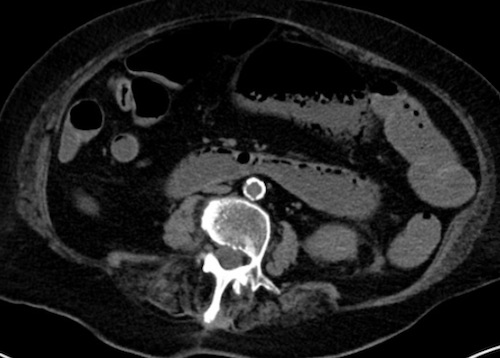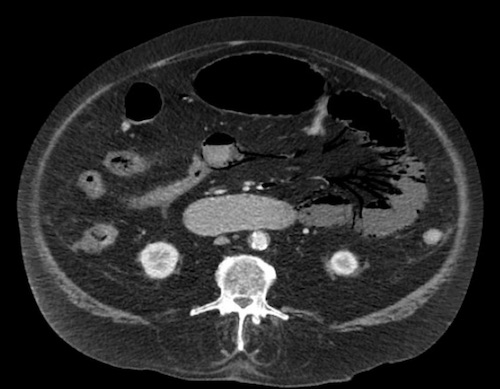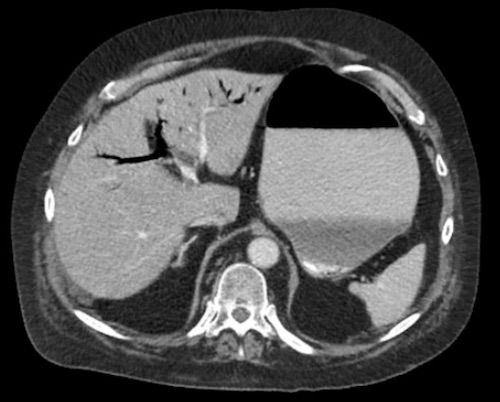Small Intestine: Pneumatosis Intestinalis
Pneumatosis Intestinalis
Pneumatosis Definitions
- Pneumatosis Intestinalis – Gas Within the Bowel Wall of Small & Large Intestine
- Also Known as Pneumatosis Cystoides Intestinalis or Intramural Gas
- Gastric Pneumatosis – Gas Within the Wall of the Stomach
Pathogenic Theories
- Pathogenesis Likely Multifactorial
- Mechanical – Gas Dissects into the Bowel Wall
- Bacterial – Gas Produced by Bacteria that Have Migrated into Submucosal Tissue
- Biochemical – Excessive Gas Produced by Bacteria within Lumen Increases Pressure & Forces Gas into Submucosal Tissue
- Pulmonary – Gas Leakage Through Alveoli Travels into the Retroperitoneum & Localizes within the Bowel Mesentery
Causes/Associations
- Primary/Idiopathic (15%)
- Secondary/Pathologic (85%)
- COPD – The Most Common Association
- Intestinal Ischemia
- Necrotizing Enterocolitis
- Crohn’s Disease
- Cystic Fibrosis
- Asthma
- Infection
- Immunodeficiency/AIDS
- Steroids
Radiographic Findings
- Most Common Site: Jejunum
- Appearance: Gas (Liner or Cystic) within Mucosa, Submucosa or Subserosa
- Subserosa More Common in Small Intestine
- Submucosa More Common in Large Intestine
- *Linear vs Cystic Morphology is Not Predictive of Clinically Worrisome Pathology
- Associated Findings Suggestive of Ischemia:
- Portal Venous Gas (Although 30% of Portal Venous Gas is Idiopathic)
- Decreased Mural Contrast-Enhancement
Clinical Correlation
- Most Are Clinically ASx
- Complications:
- Obstruction
- Intussusception
- Ulceration & GI Bleed
- Pneumoperitoneum from Rupture of Subserosa Cysts
- Management Based on Etiology & Presentation
- Severity:
- 60% Have Benign Disease
- 40% Have Pathologic Disease Requiring Surgical Intervention
- Strongest Predictor of Pathologic Cause Requiring Surgery: Lactate > 2.0 mg/dL

Pneumatosis Intestinalis

Mesenteric Venous Gas

Portal Venous Gas